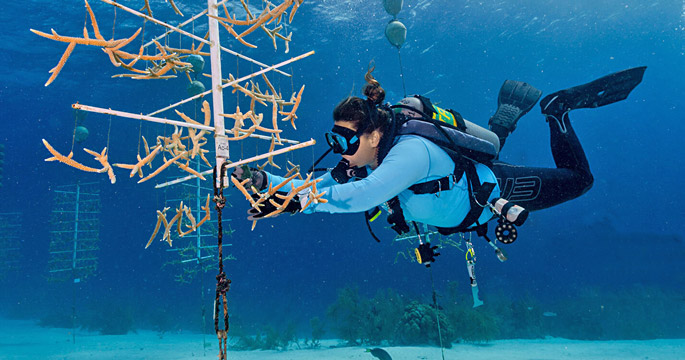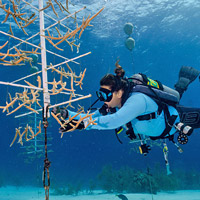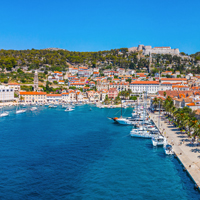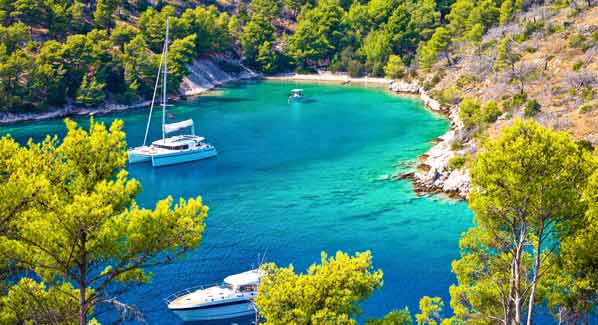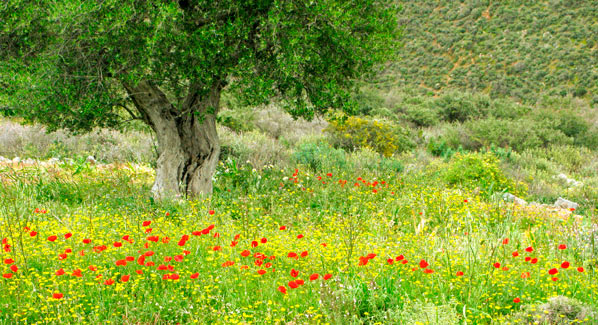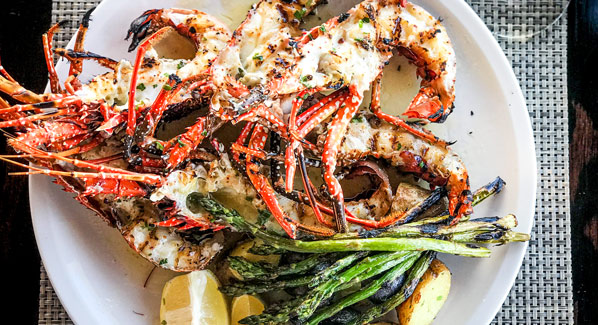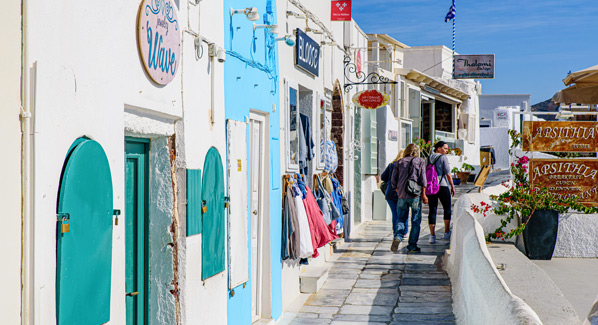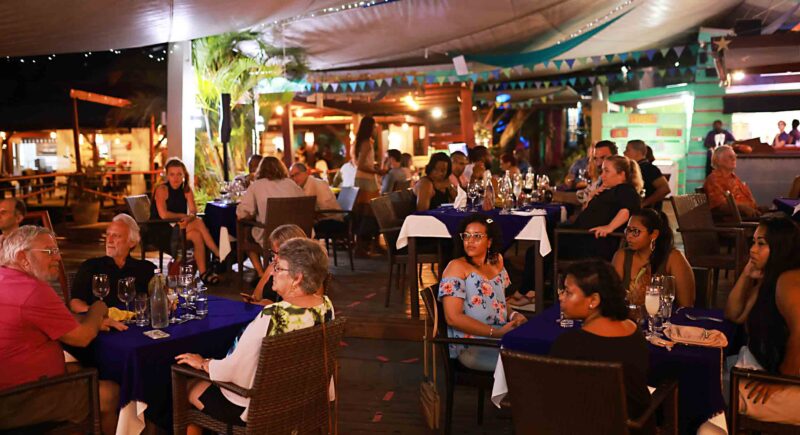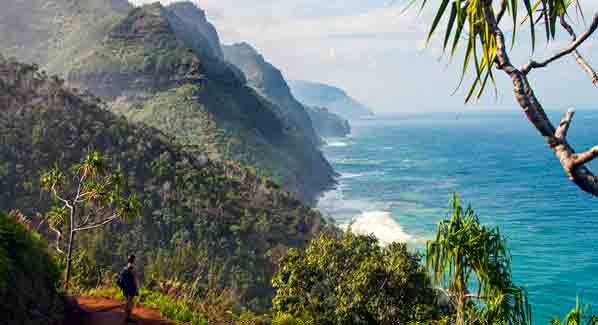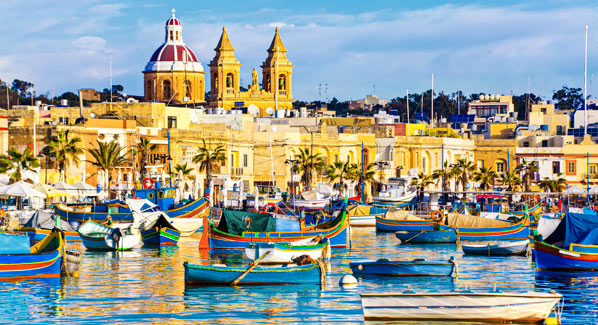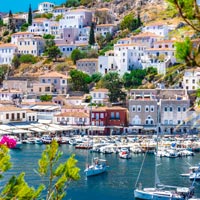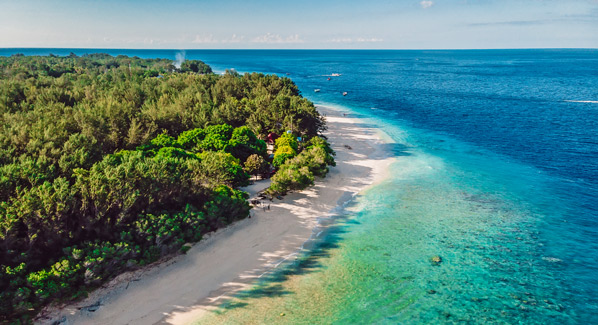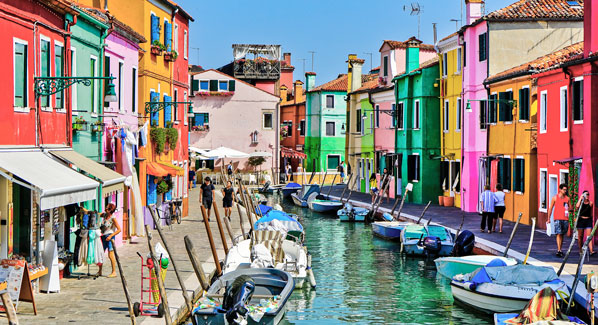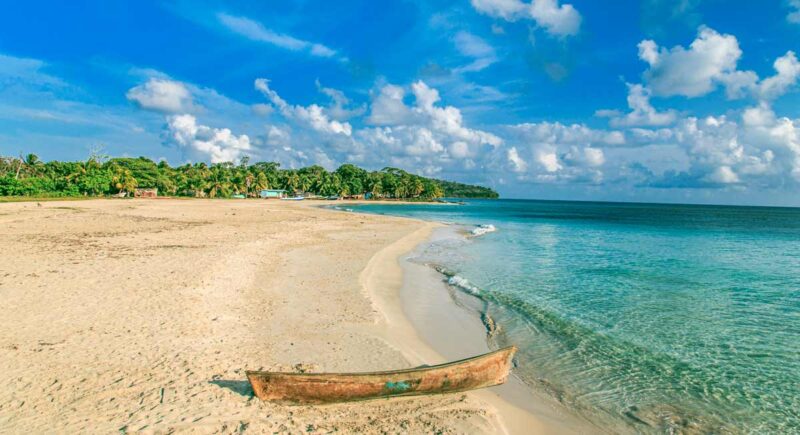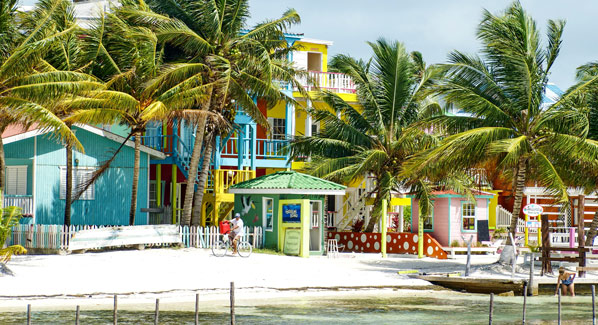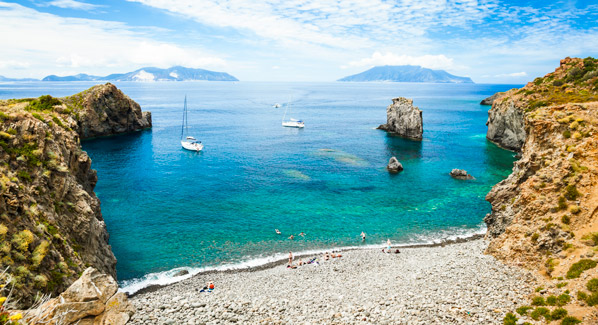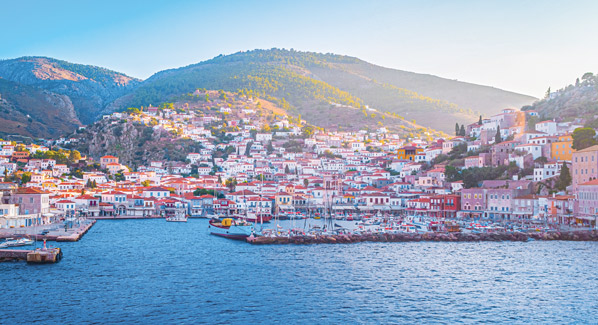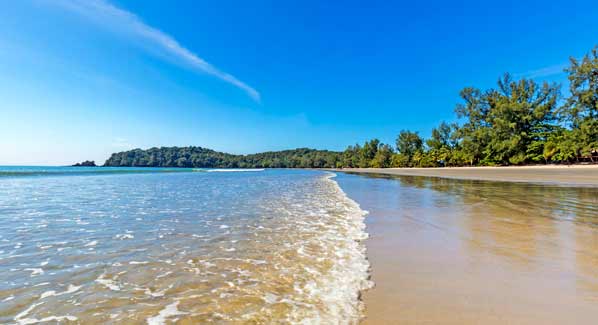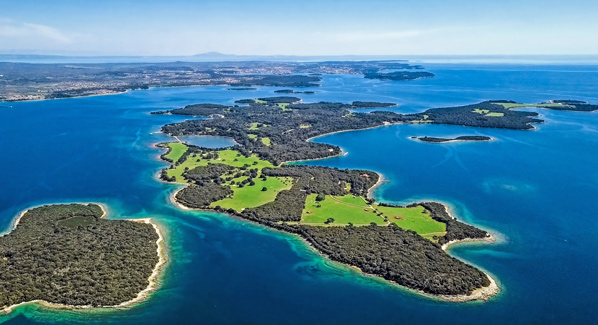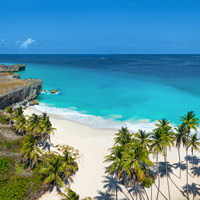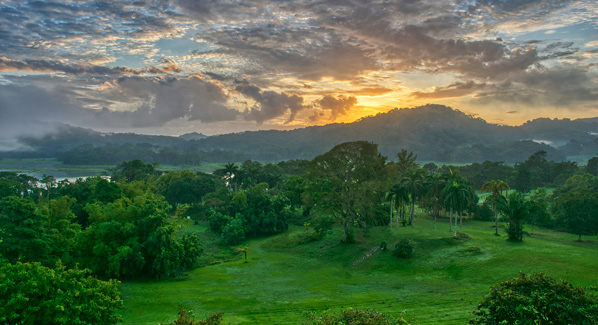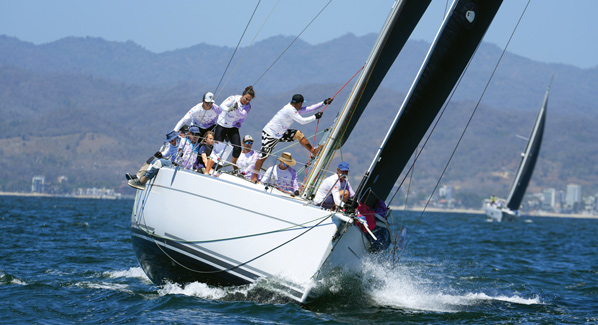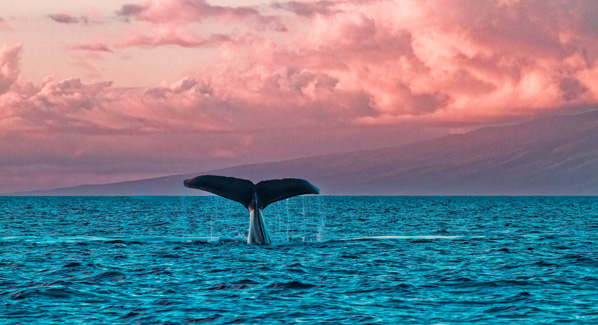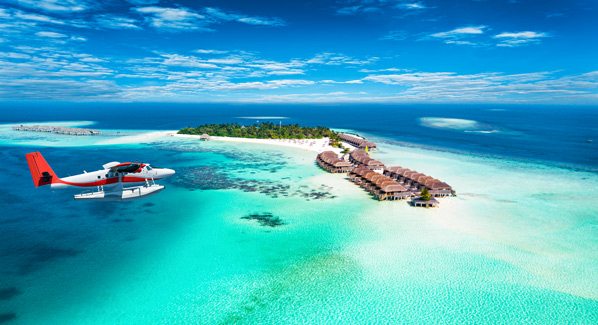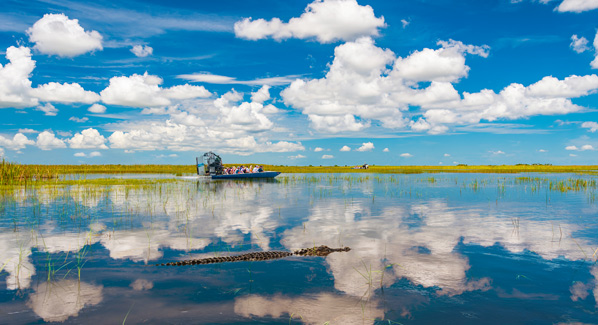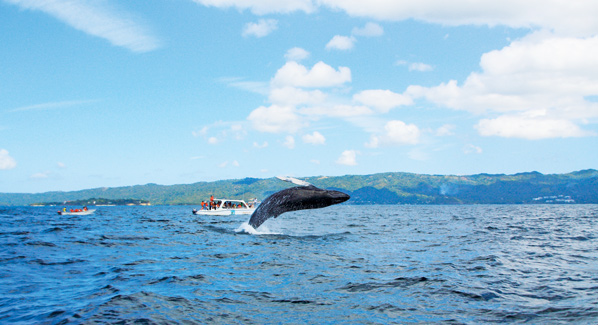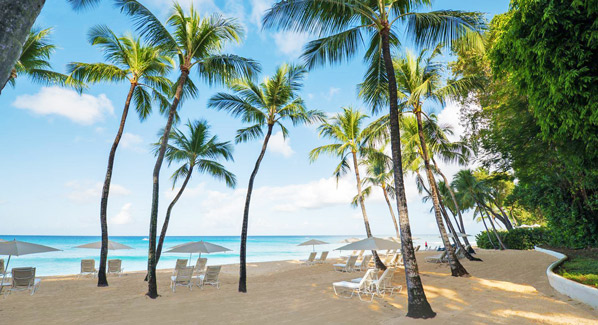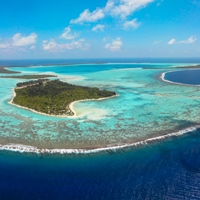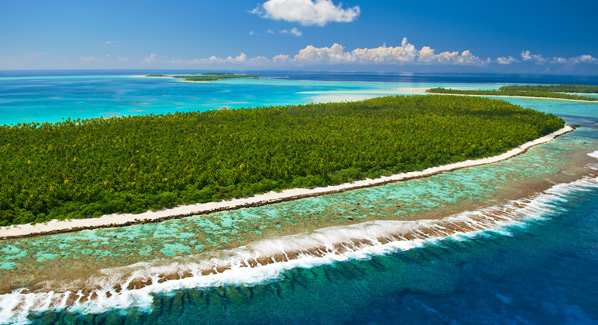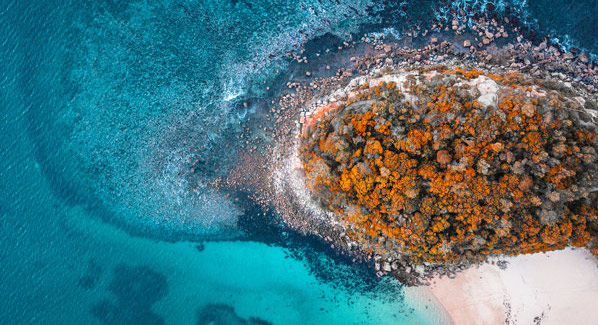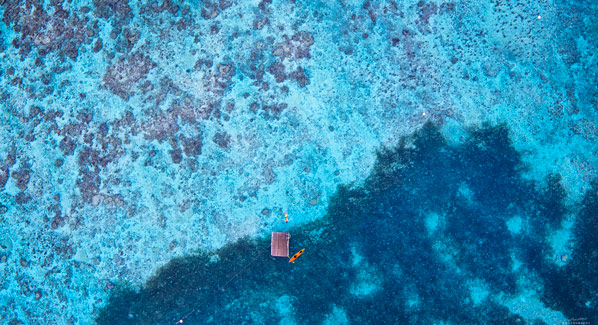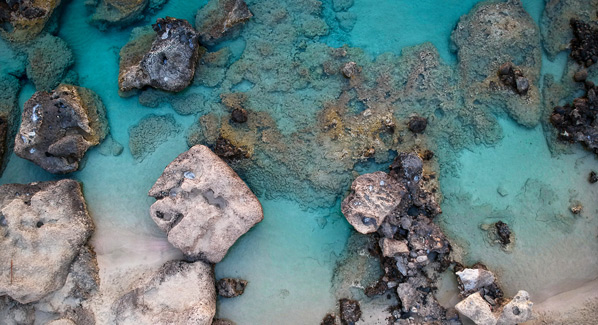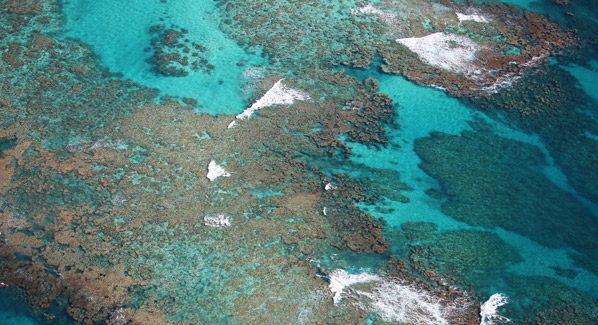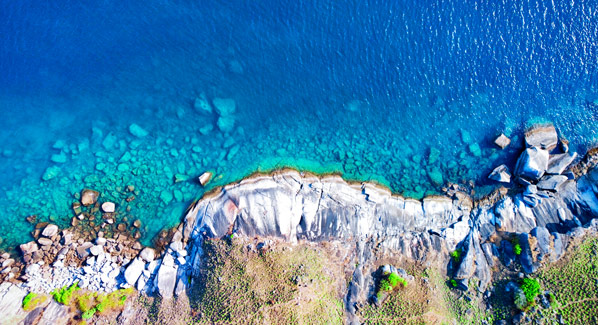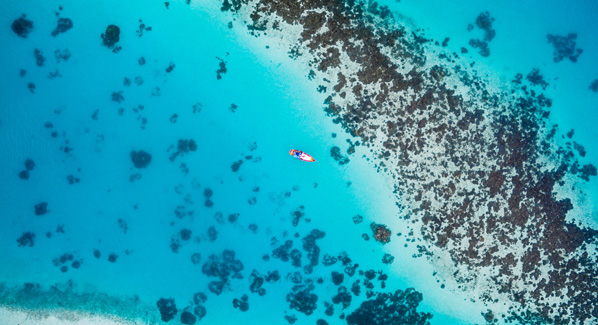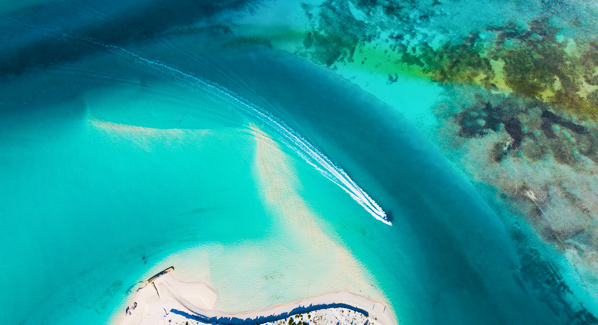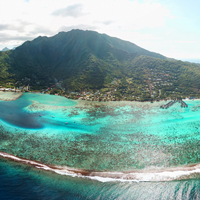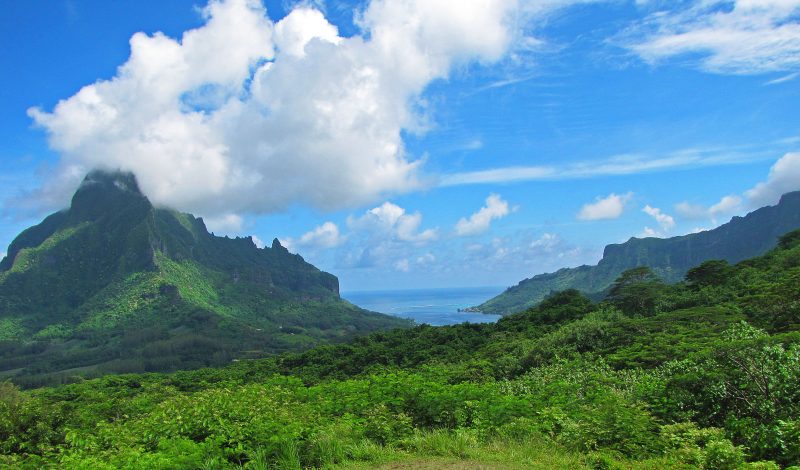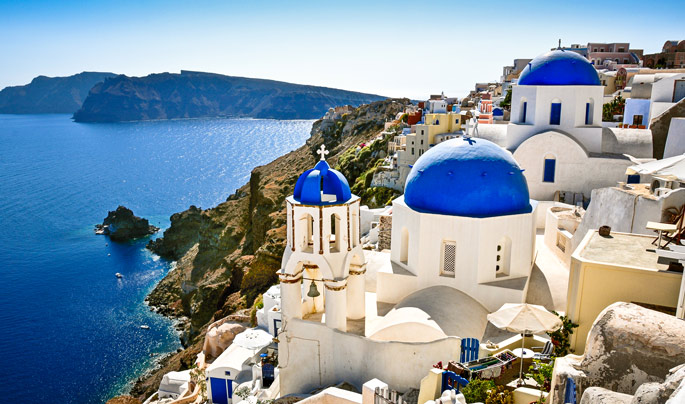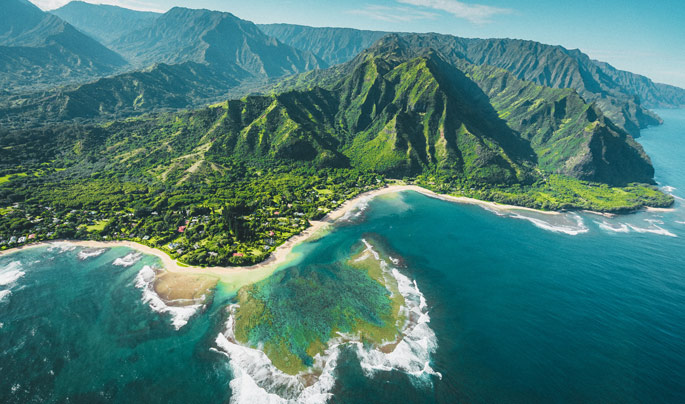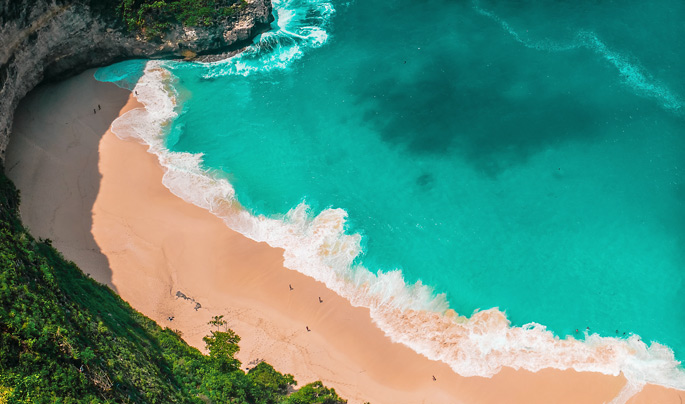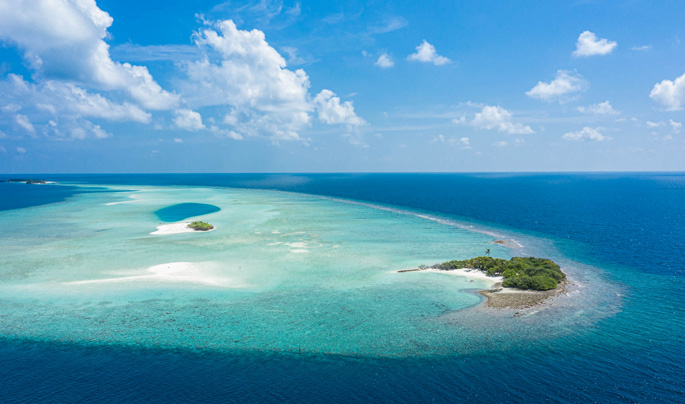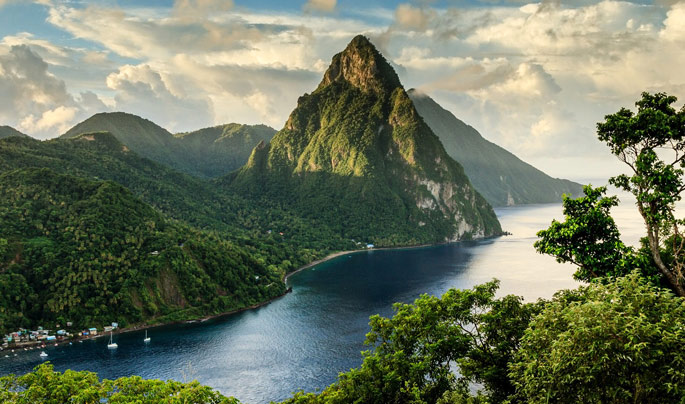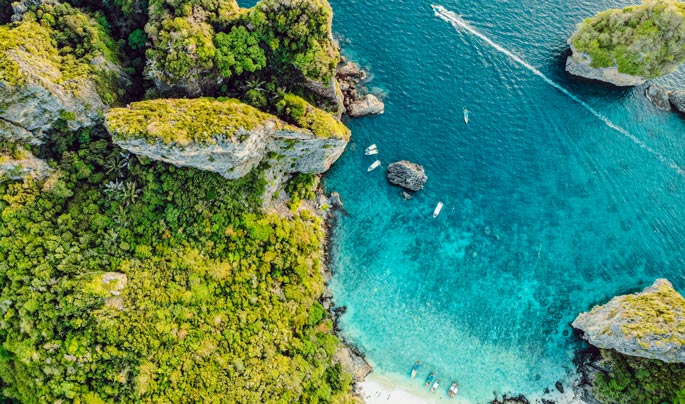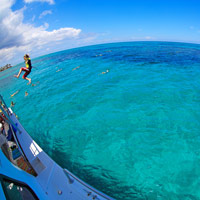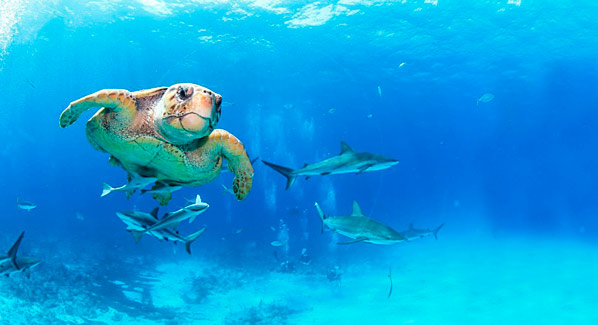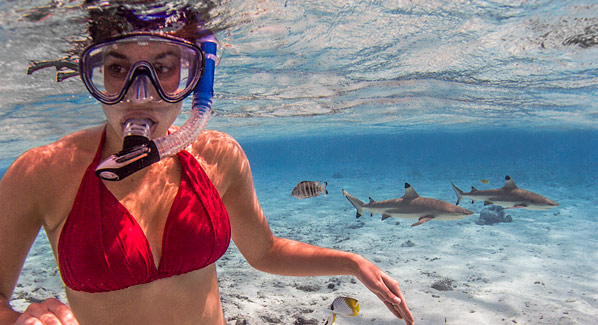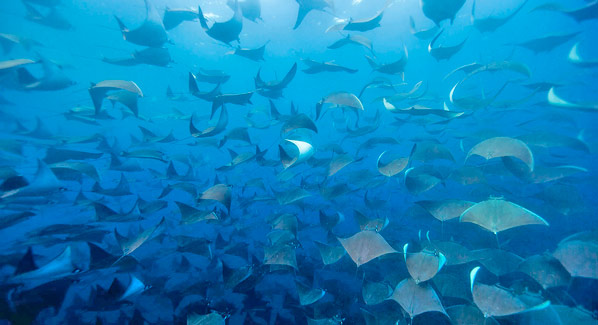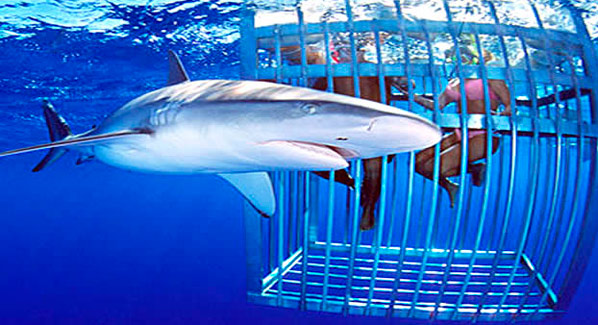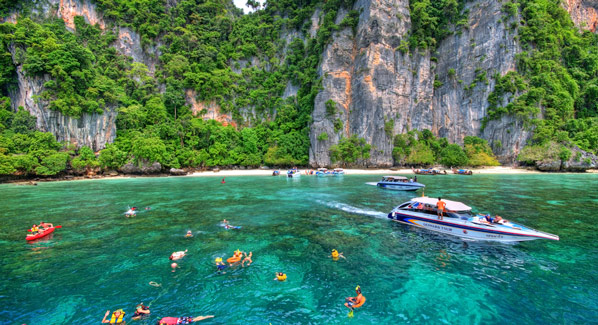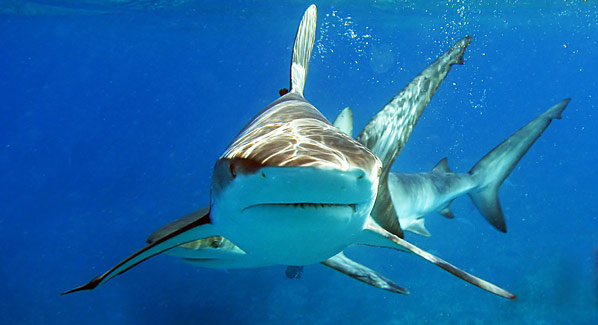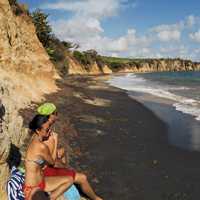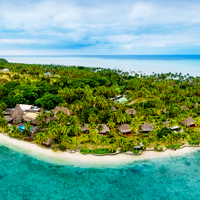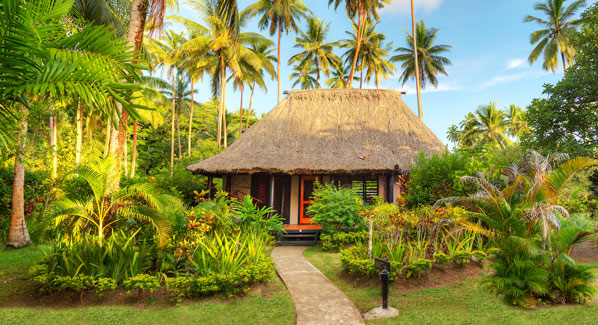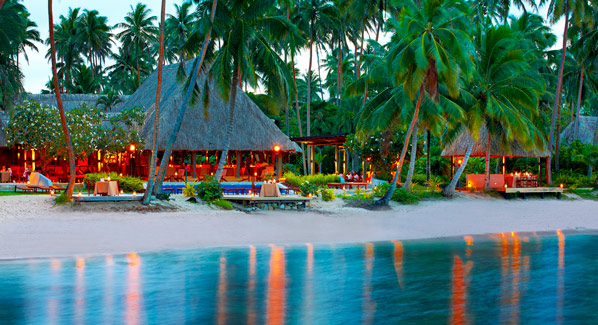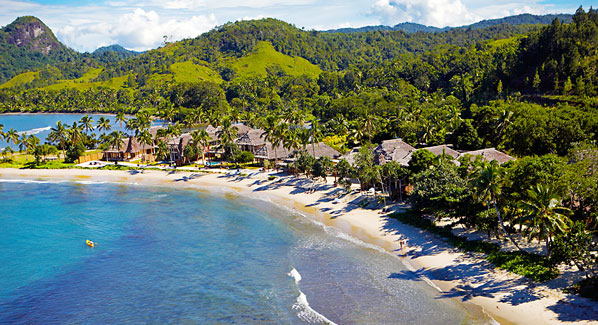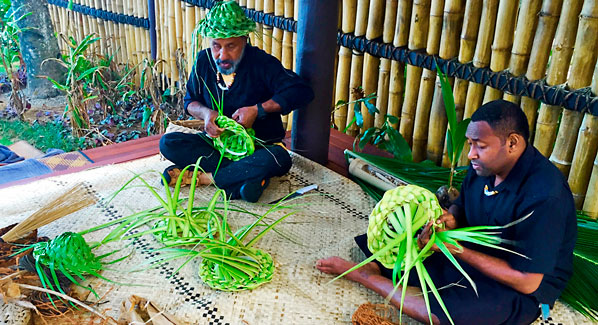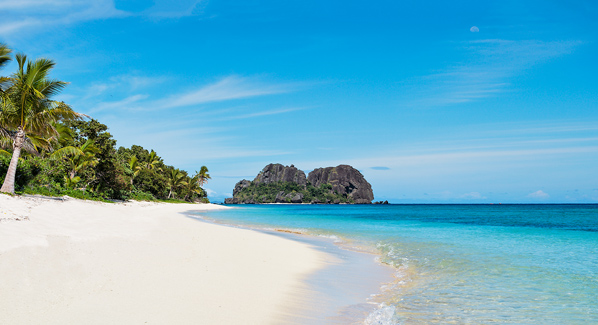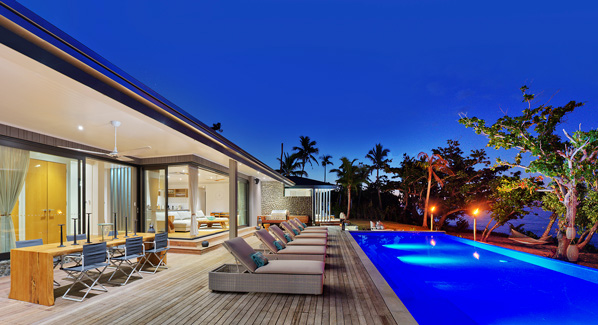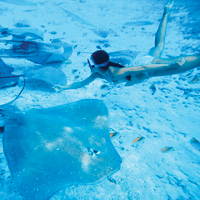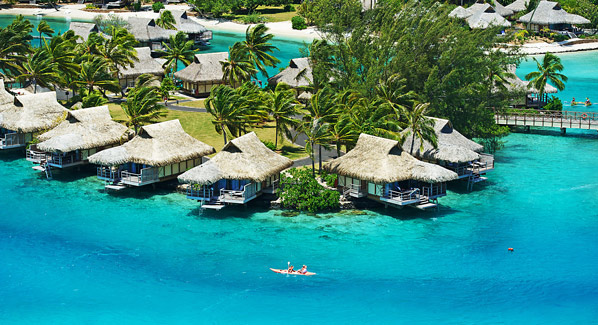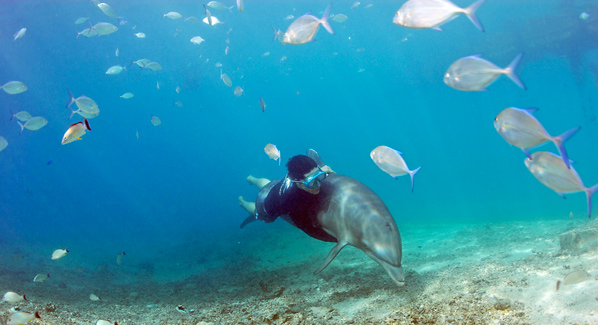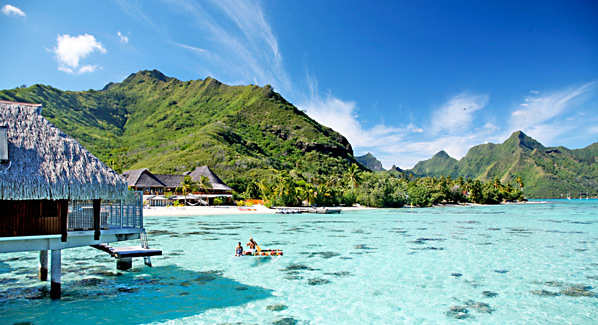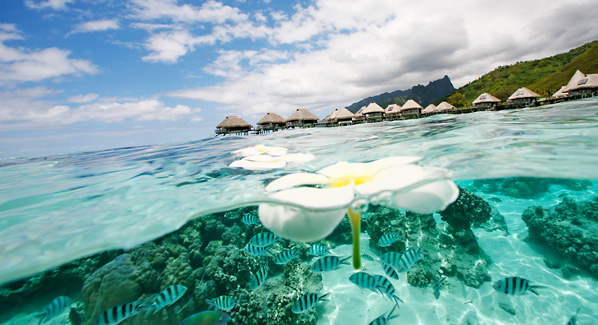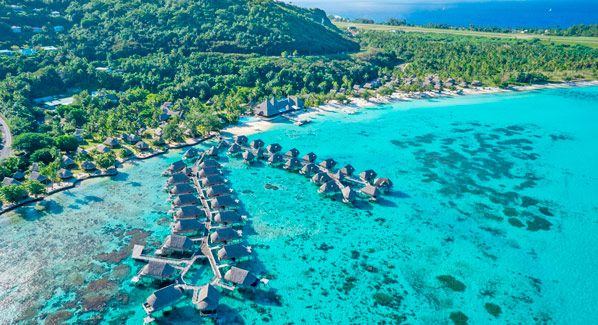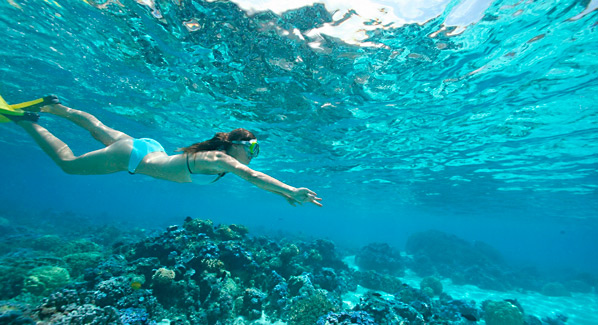Diving or snorkeling on a coral reef is a magical experience. It’s unfortunate that reefs in many parts of the world now face threats from human impact, but there is hope. Governments around the world continue to establish and expand marine preserves that protect coral reefs. And there’s a growing movement to move beyond mere protection and focus on restoration.
Currently, there are more than 100 international organizations dedicated to rebuilding coral reefs, and the leading method is the replanting of corals. Much like tree saplings, small fragments of living coral can be nurtured in a controlled environment, then replanted in the wild to revitalize natural reefs. This is a labor- intensive process, and many of these programs rely on volunteers to do the planting. If you are a diver or snorkeler who wants to get involved in coral reef conservation, here are nine resort destinations where you can make a difference during your vacation.
Four Seasons Bora Bora
The island of Bora Bora is surrounded by one of the world’s most scenic lagoons, and the Four Seasons Resort plans to keep it that way. Set within the lush landscaping of this premier property is the Sanctuary, a sheltered body of water that’s home to a marine research station and a coral nursery. The guests of the resort are invited to snorkel in this natural aquarium to witness or participate in ongoing coral seeding and planting work. During a half-day immersion session, participants learn how to harvest and graft corals into donut-shaped rings. These structures will later be placed in open water to form new reefs and disperse millions of coral spawn to help ensure Bora Bora’s reefs remain spectacular. For more info: https://www.fourseasons.com/borabora/
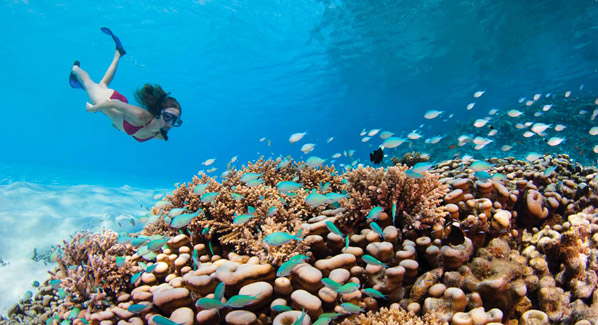
Coral fragments planted by divers at the Four Seasons Bora Bora Resort are thriving and continue to grow and provide habitats for fish and other marine life. Photo: Four Seasons
Buddy Dive Resort, Bonaire
Bonaire has some of the healthiest coral reefs in the Caribbean, thanks to decades of protection. But even healthy and well- protected coral colonies can benefit from an infusion of new growth, and that’s the mission of Reef Renewal Foundation Bonaire and Buddy Dive Resort. The resort offers a range of coral replanting programs ranging from an afternoon session to a full week of volunteering. A Reef Renewal dive takes place on the nursery located in a shallow section of Buddy’s Reef, right in front of the resort dock. Participants learn the basics of assessing nursery health and tending to the corals. Full-day programs have divers helping foundation staff with nursery maintenance and out-plantings at a number of different sites. Buddy Dive also offers a Reef Renewal Week Package that includes 12 dives devoted to foundation activities. For more info: https://buddydive.com/
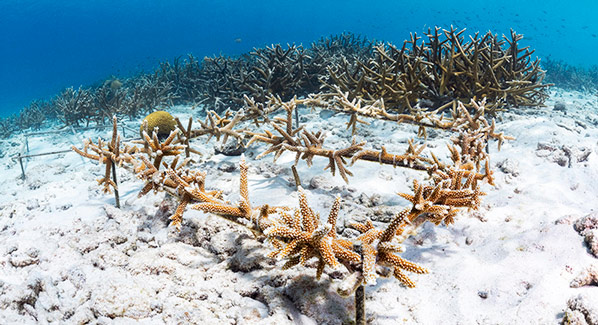
Newly planted staghorn corals in Buddy Dive’s coral nursery will grow into dense clusters that support a wide variety of marine life. Photo: Buddy Dive
Outrigger Fiji Beach Resort
The Ozone – AKA Outrigger Zone – is this upscale resort group’s conservation initiative to protect coral reefs through awareness and restoration. At Outrigger Fiji Beach Resort and Castaway Island, guests are encouraged to visit on-site coral nurseries and learn what can be done to protect the world’s coral reefs. Anyone who wants to take it one step further is encouraged to join the resort’s dive team and resident marine biologist in an ongoing replanting program. These programs include the creation and deployment of unique “fish houses” made from cultivated coral fragments. When placed in local waters, these structures transform into new marine life habitats as the corals continue to grow. Both snorkelers and divers can view the coral nursery and take part in the replanting program. For details: https://www.outrigger.com/fiji/fiji-beach- resort
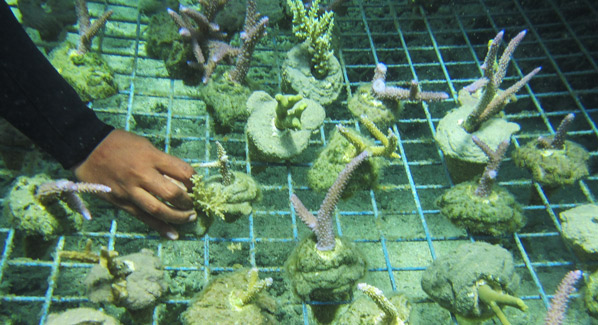
A collection of new corals is readied for placement on one of the fish house formations at Outrigger Fiji Beach Resort. Photo: Outrigger Fiji
Sandals Resorts, St. Lucia
Protecting and restoring the coral reefs in the Soufriere Marine Managed Area in St. Lucia is a project headed by CLEAR Caribbean in collaboration with the Sandals Foundation. As part of the project local communities and schools are engaged and educated on the value of reefs. While guests at Sandals may enjoy windsurfing and wakeboarding as part of the activities now scuba divers can add one more endeavor to the list by learning the art of coral planting. This activity is available to certified divers staying at any one of the island’s three Sandals properties – The Grande St. Lucian, Halcyon Beach, and Regency La Toc. The program begins with land and in- water practice sessions that culminate in a special dive trip where participants will attach corals to new reefs. Once these new corals are established, they provide shelter for fish and lobsters, along with coastal protection from storms and swells. For more info: https://sandalsfoundation.org/environment-project-coral- restortation https://www.clearcaribbean.org/
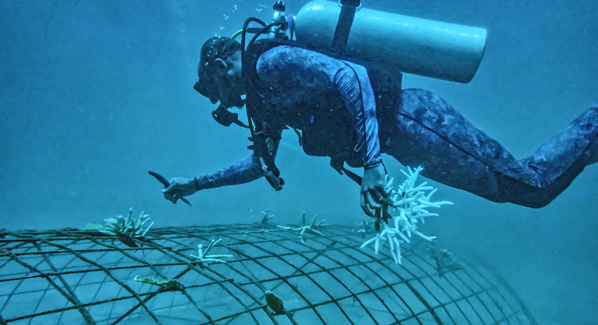
At the Sandals St. Lucia coral nursery volunteer divers can help transplant newly grown coral fragments to area reefs. Photo: Sandals
Anantara Dhigu, Maldives
Anantara’s Dhigu resort sits on a stunning private island ringed by white-sand beaches and colorful coral gardens. To ensure the future health of these sites, guests are encouraged to adopt a rope. This program, which was launched more than a decade ago, embeds coral fragments onto ropes that are then positioned to provide optimum sunlight and water quality. Guests can adopt a rope by donating, while those who want to get hands-on can participate in attaching corals to their rope with the help of a resident marine biologist. As the rope transforms into a living piece of reef, it will be moved to the resort’s snorkel trail and other area reefs. Along the way, the nursery staff provides updates and photos so participants can witness the results of their work. For details: https://www.anantara.com/en/dhigu-maldives
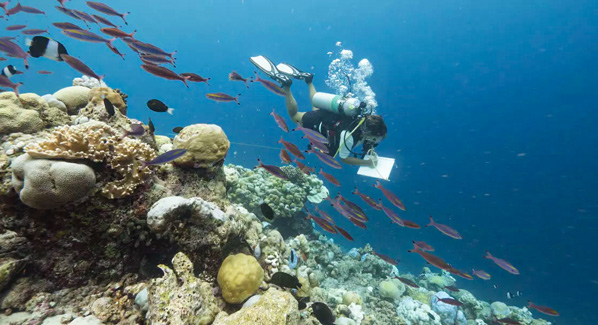
At Anantara’s Dhigu resort, a diver checks the status of corals planted on a new snorkel trail. Photo: Anantara Dhigu
Four Seasons Seychelles
This premier Four Seasons property created the Petite Anse Reef Restoration Project to protect and nurture corals. A key element of the program uses divers to collect pieces of broken coral damaged by natural events such as wave action. These rescued corals are placed in the resort’s coral nursery for later replanting, and in the first two years of the program, more than 16,000 coral fragments were replanted on the reef. A unique element of the program is known as the Love Grows Beautiful Things experience, which gives couples a chance to use rescued corals to create a heart-shaped coral formation that will be placed on the reef. For info: https://www.fourseasons.com/seychelles/
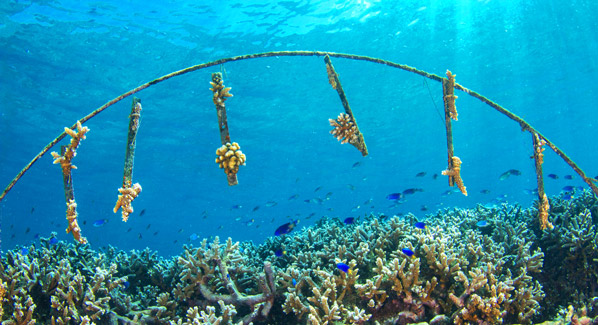
At the Four Seasons Seychelles, coral fragments are placed on frames that will allow them to grow into heart-shaped formations. Photo: Four Seasons Seychelles
Xbalanque, Roatan
The Roatan Marine Park is always looking for volunteers to help keep the island’s coral reefs healthy. You don’t have to be a diver to participate in the various educational and outreach programs at the foundation’s coral nursery. Divers can take their experience to the next level with a Coral Restoration Certification Course to learn the skills needed to participate in coral restoration. Once qualified, divers can become coral farmers for a day. Those with a true passion for the reefs can take the next step with a longer-term internship program. The foundation works with a number of local hotels and resorts, and a favorite with vacationing divers is the Xbalanque, which is a luxury boutique property located within easy walking distance of Marine Park headquarters. For info: https://www.xbalanqueresort.com/
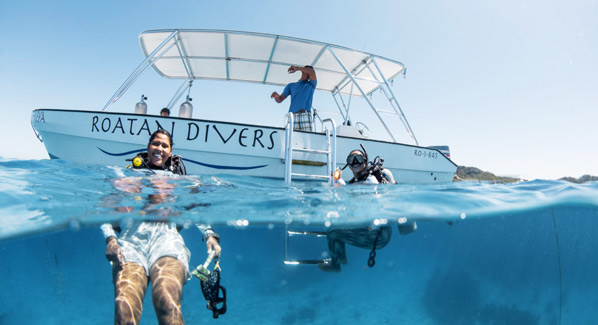
Divers surface after relocating corals to a reef in the Roatan Marine Park. Photo: Roatan Marine Park
El Cid La Cieba, Cozumel
In 2023 the Cozumel Reef Restoration Program will mark its tenth year of research and action to protect and restore coral reefs in the waters of this favorite Mexican scuba diving destination. Founder Dr. German Mendez remains hands-on with both educational programs and volunteer diving activities. A unique aspect of this restoration project is the use of underwater platforms that become recovery stations for damaged corals. Volunteer divers help by scouring the seabed for coral fragments, which are then placed on the platforms and allowed to grow until they are large enough for replacement on the reefs. One to five-day programs are offered by the foundation, which is based at the El Cid La Ceiba Beach Hotel. For info: https://www.elcid.com/cozumel/el-cid-la-ceiba-beach- hotel/
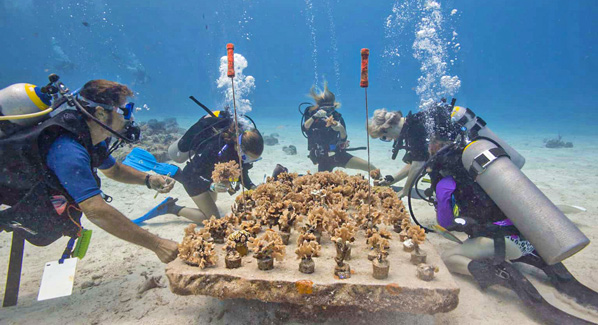
Divers attach rescued coral fragments to a concrete platform as part of the Cozumel Reef Restoration Program. Photo: Cozumel Reef Restoration
Zeavola, Thailand
Set on a scenic beach at the northern tip of Koh Phi Phi Island, Zeavola is one of Thailand’s leading Five Star PADI dive resorts. The resort combines luxury accommodations with diving adventures that offer an opportunity for guests to get involved and make a difference in the marine environment. The volunteer program begins with instruction and practice on the methods used to reconstruct and replant coral structures. These skills are then put to work during dive trips that restore corals in the surrounding waters. Non-divers can also help, as the resort schedules regular snorkel excursions that remove fishing gear and plastic debris from the reefs to prevent corals from suffocating. For more info: https://www.zeavola.com/
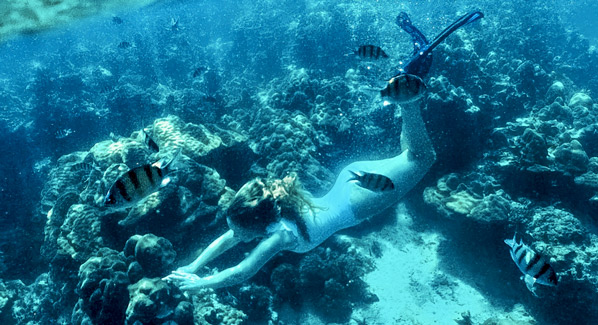
A free diver participates in a coral reef cleaning session at Thailand’s Zeavola resort. Photo: Zeavola

